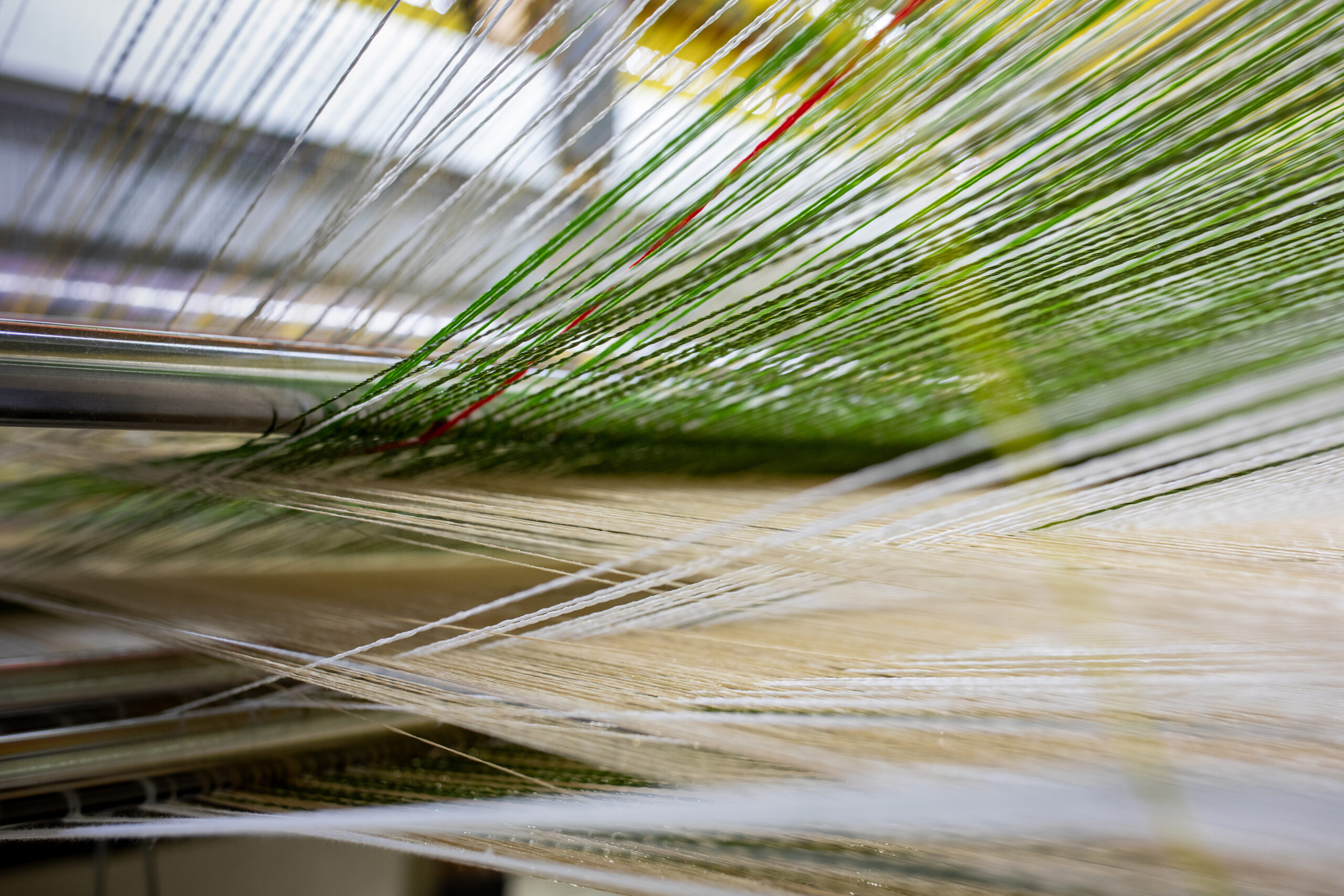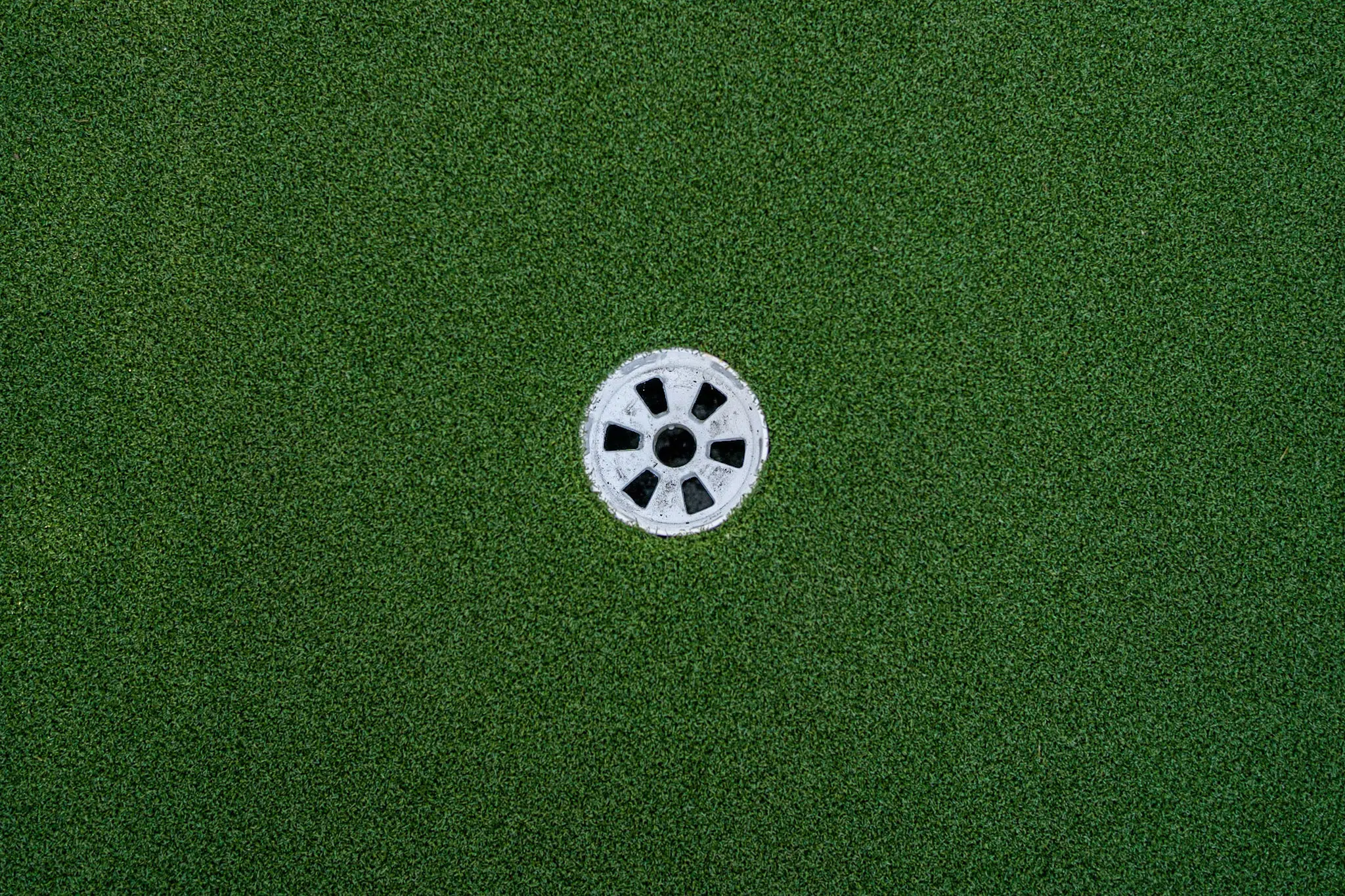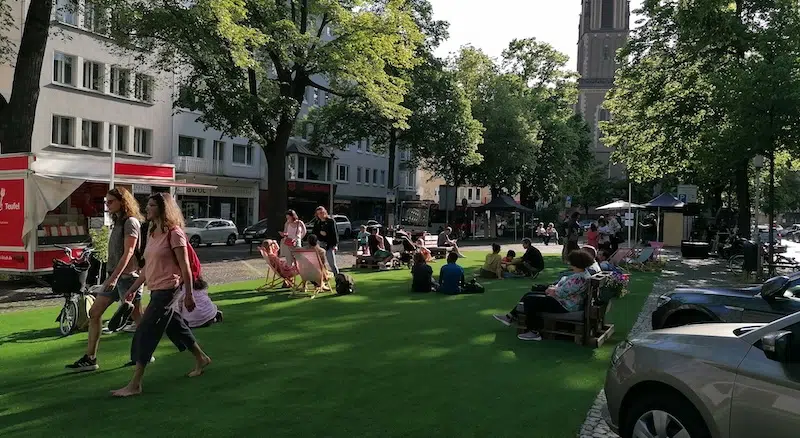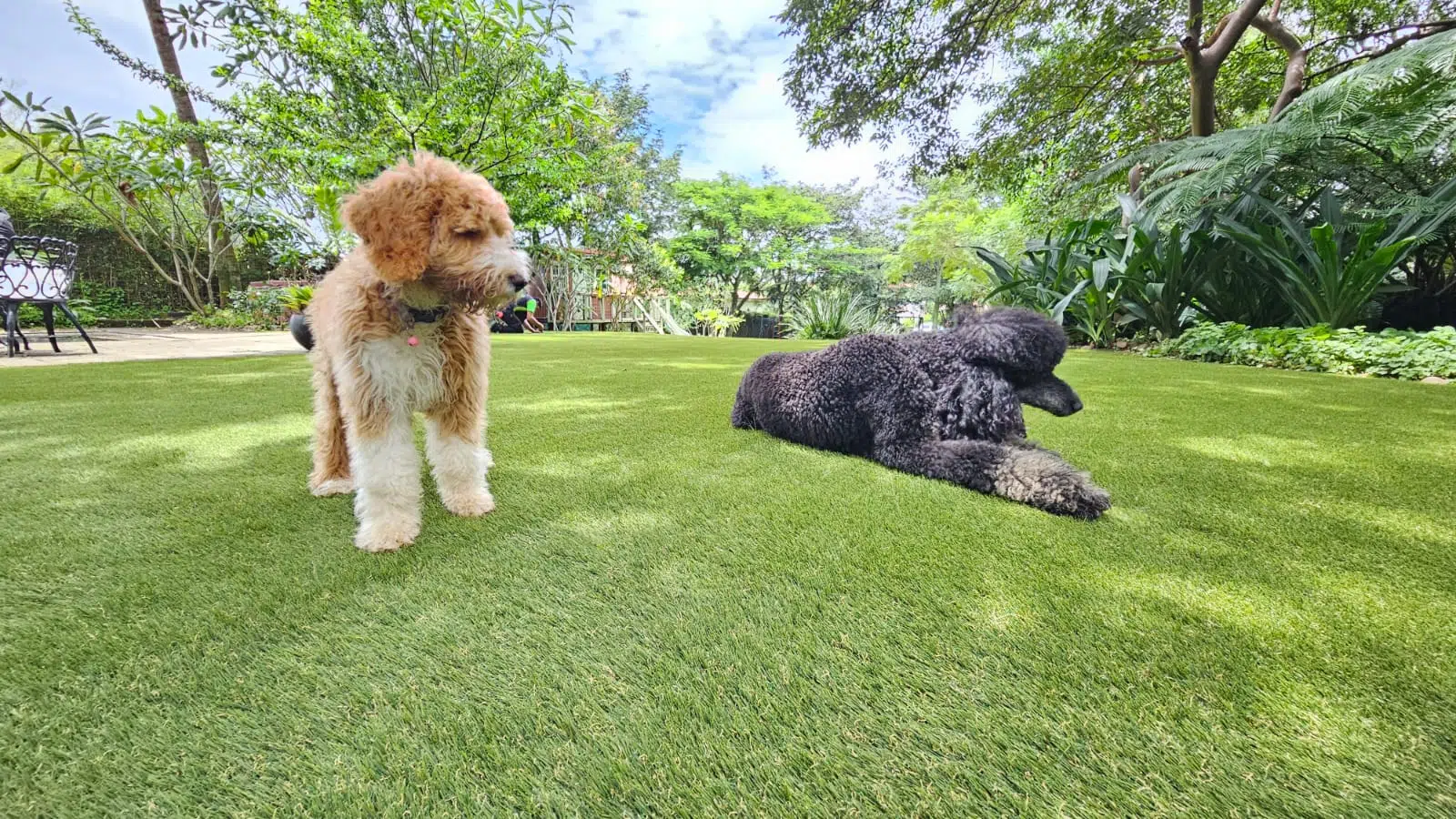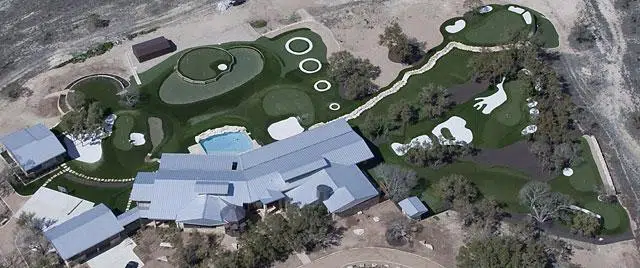
The World’s Greatest Backyard
Published by the Wall Street Journal
By: John Paul Newport
Dripping Springs, TX — Short-game coach Dave Pelz, carrying do-it-yourself to an extreme, has created what for my money is the world’s greatest home office, in this case 2½ acres for practicing pitching, chipping and putting. One could certainly call Pelz eccentric for transforming the rocky terrain around his new house here into scale replicas of famous golf greens—the 12th at Augusta National, the island 17th at TPC Sawgrass, the 14th at Pebble Beach—and draping it all with artificial turf. But finding ways to improve at the short game is Pelz’s job, and he has spent 30 years tinkering with ideas about the perfect setup.
“Please don’t call it a course. It’s a facility,” Pelz, a former engineer, said about his backyard. “The whole effort here is to produce every shot in golf that I care about, so that I can practice them.”
It’s beautiful, too, at least in the eyes of a golf nut. A stream that mimics Rae’s Creek at Augusta is programmed to start gurgling at 5 p.m. every day, about when the sun begins to set over the hills west of Austin. “You’ve got to have music,” Pelz explained, referring to the stream. “This is my dream—that if I’m going to practice, I want to enjoy it.”
Pelz will not use the facility for teaching—it’s his home. But he does invite friends and the occasional Tour pro to come over and mess around. In his mind it’s a kind of demonstration project, proof that backyard practice is effective, attainable, and can help expand the game.
The best thing about the facility, from Pelz’s point of view, is how quickly he has access to golf—”real golf, not just a range,” he said. He’s timed it. At first it took 44 seconds from rising in his easy chair in the den to hitting the first ball. Now, by stashing his clubs and balls more strategically, he has trimmed that to 30 seconds.
Shoehorning even a bit of practice into the day can take too long. You usually have to get into your car, drive to a course, chat with the pro and walk out with your clubs to the practice green or range. “If you live 45 minutes from your course, like I used to, forget about it. Nobody with a busy lifestyle is going to spend two hours total for 30 minutes of practice,” he said.
For the past 20 years, Pelz has been so busy running his golf schools, writing books and working with clients like Phil Mickelson that he seldom practiced. Despite a lifelong passion for the game, he estimates he had been logging only two or three rounds per year. He figures a lot of ex-golfers are in the same boat.
“My argument is that if people had easy access to golf like this, they could practice some during the week, and then have a lot more fun on the weekends when they are able to get to a course,” he said.
All seven of Pelz’s replica greens (his wife, JoAnn, threatened an intervention if he built more) serve specific purposes. The Augusta 12th, for example, tests 40-yard pitches, which Pelz’s research has shown to be the most difficult distance in golf. That’s if you’re hitting to the green from the shade of Pelz’s deck, shade being an important design consideration in Texas. But you can also hit to that green off a sidehill lie from 20 yards or from an uphill patch of simulated rough at 65 yards. Other greens are set up for long bunker shots and bump-and-runs. In addition, he has putting-only greens running at various speeds.
“The toughest problem we faced was getting balls to stop properly,” Pelz said. Artificial turf on concrete putts beautifully, he said, but is hopeless at holding chips and pitches. In the past, the best solution for that purpose was long-fibered turf infused with sand, so that only the tops of the nylon blades were visible. Those greens can hold approach shots, Pelz said, but balls land with a thud. The greens don’t always putt well and storms can wash out the sand.
For the last three years, Pelz has worked with a company called SYNLawn to develop an energy-absorbing underlayer that provides just the right balance of firmness and bounce. This material absorbs roughly 80% of the energy from a pitch shot’s initial impact, allowing spin to take over after the first hop.
“You have to nip the ball just right to get it to stop,” Pelz said, showing off with a couple of quick-checking 20-yard pitches to the Pebble Beach 14th green. “If you catch it just a bit fat, the ball won’t spin as much and it will go off the back of the green. You want that because you want to know if you hit a good shot or not.”
Useful home practice setups don’t have to be expensive. Portable putting greens with a hole or two are the place to start, Pelz advised. The next step, even in a small backyard, would be an artificial-turf pad, perhaps 4 feet square, for work on distance control.
“The most frequent pitch shot all golfers face is 14 yards,” he said. “If you master distances between 10 yards and 30 yards, which is possible in most backyards, you’re going to turn a lot of three-shot situations into two shots the next time you play,” he said. Laundry baskets or towels make excellent targets. If you’re worried about breaking windows, lightweight Almost Golf balls go just about as far as regular golf balls at short distances.
Pelz’s own next project is a series of small target greens out to 200 yards, for practicing full shots from a practice tee. He’s already built one.
View the full story online at this location.
